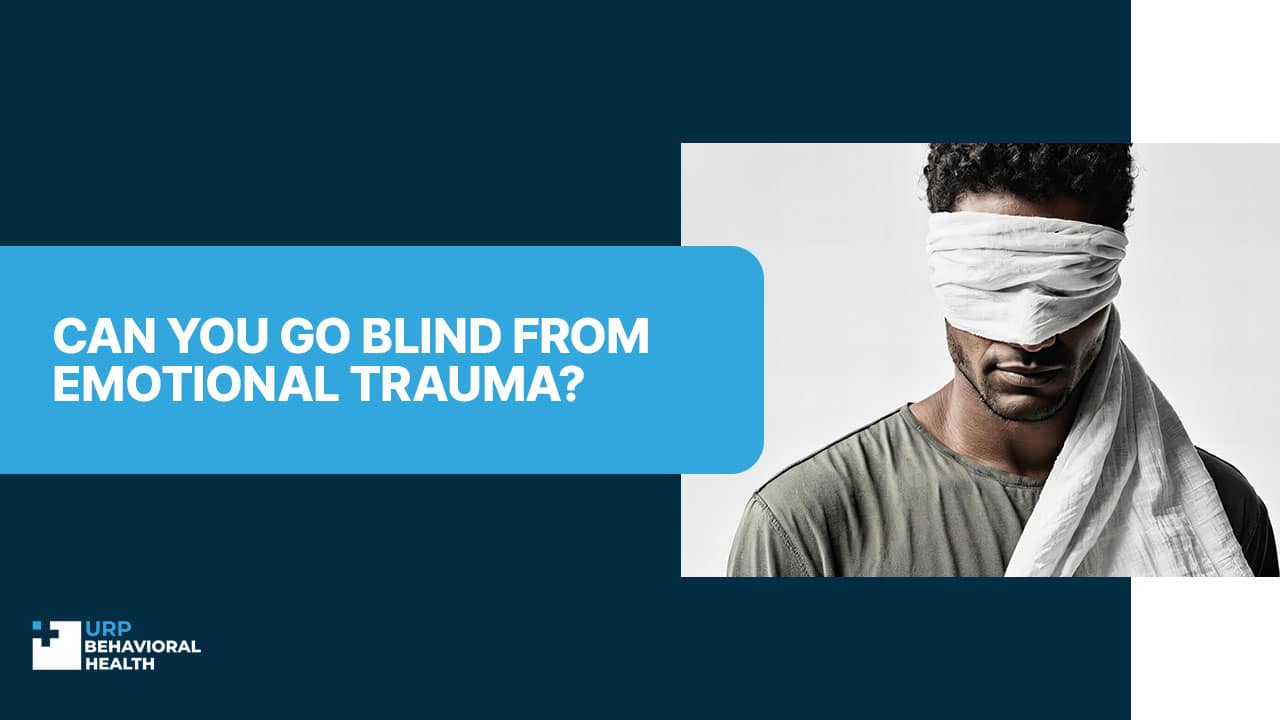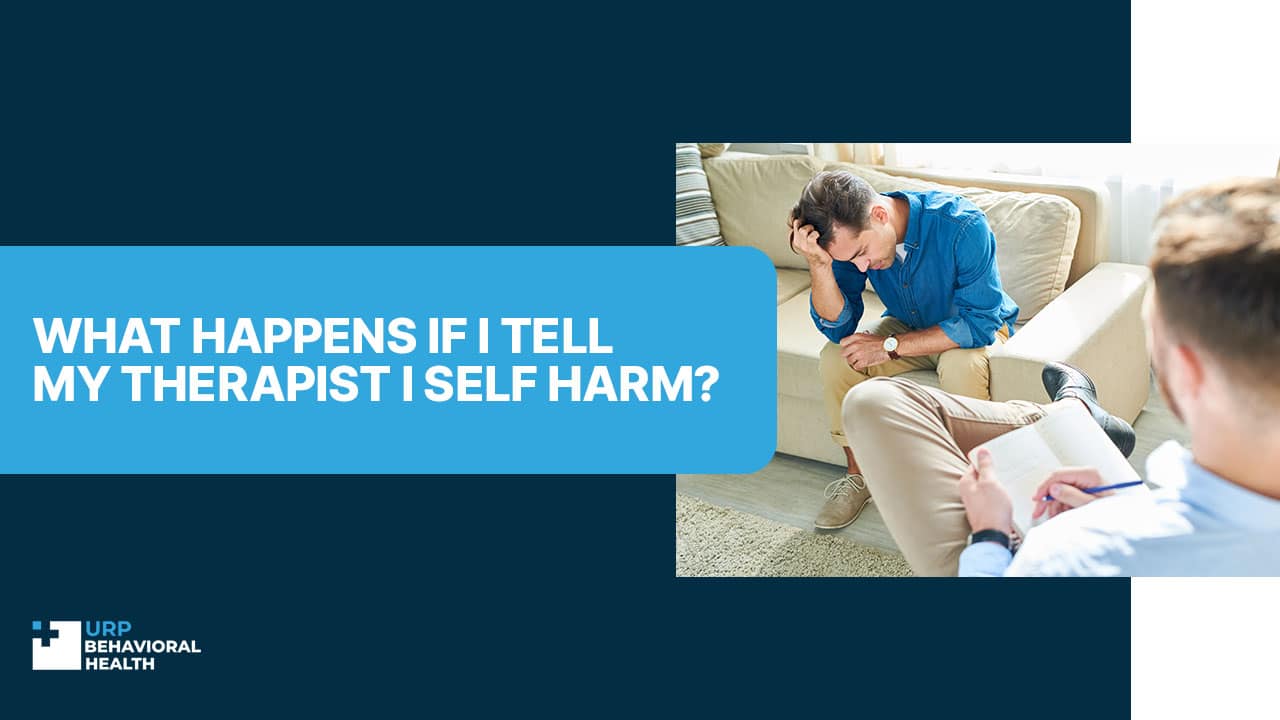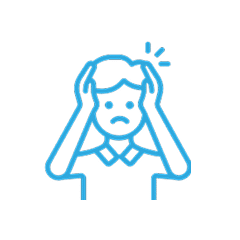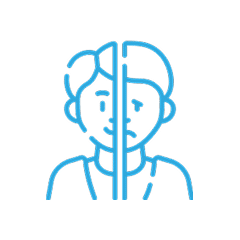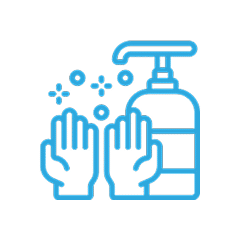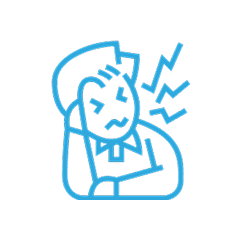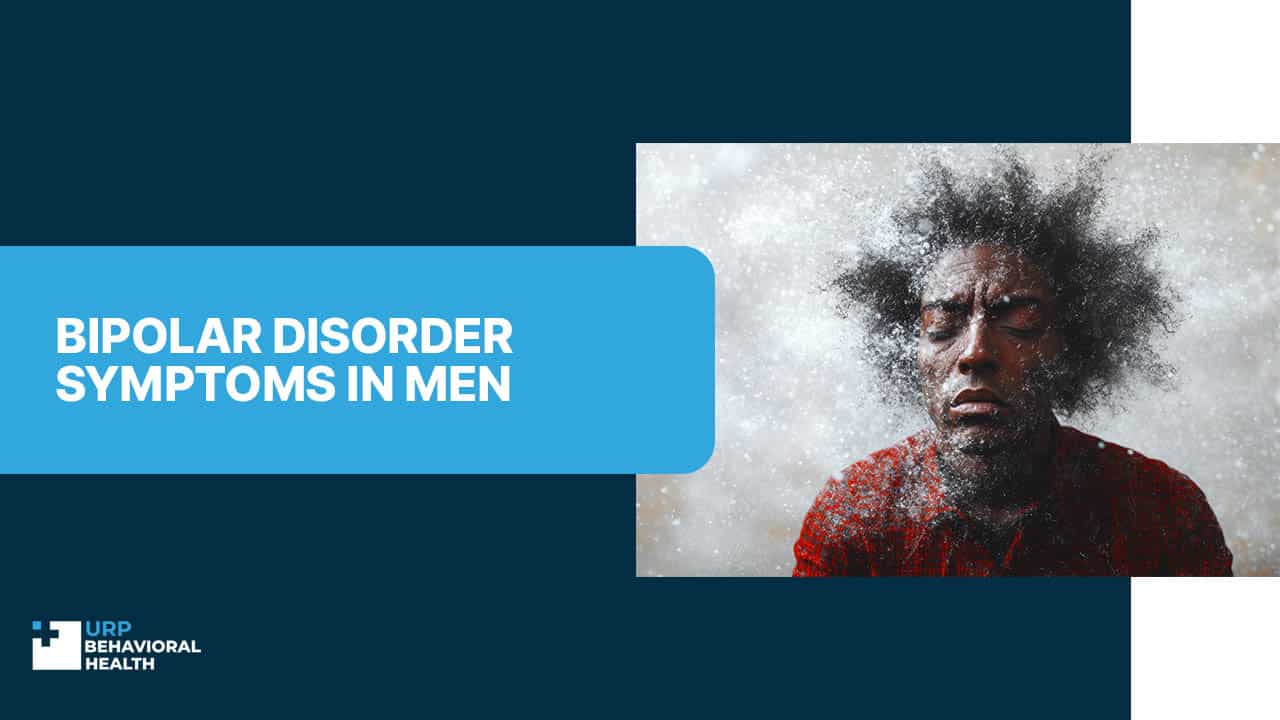
Bipolar Disorder Symptoms in Men
Bipolar disorder ruthlessly affects both men and women [1], having a sweeping impact on a person’s emotional and psychological state, work, daily life, and relationships. Bipolar signs and symptoms in men have distinct peculiarities. What are the signs of bipolar in men? Are their symptoms more severe, or do they have episodes more frequently? Let’s discover how manic-depressive disorder manifests in males and when it’s time to blow the whistle.
Key Symptoms of Bipolar Disorder in Men
Bipolar disorder is a lifelong clinical condition that requires adequate support and treatment to improve a person’s capacity to carry out daily tasks. Symptoms of bipolar in males [2] encompass a range of erratic patterns, depending on the disorder type (bipolar I, bipolar II, cyclothymic, or unspecified):
- striking shifts in energy, temper, and activity levels;
- euphoria, short temper, and impulsivity during manic episodes;
- persisting melancholy, hopelessness, and fatigue throughout depressive phases;
- rare periods of stabilized mood;
- visible alterations in appetite and weight;
- disruption in established sleep patterns;
- risk-taking endeavors;
- suicidal impulses and demeanors, and more.
Men bipolar symptoms pose numerous complexities that interfere with a person’s ability to reach adult lifestyle goals. Emotional extremes don’t coincide with social expectations of mental health in males, making them conceal emotions or deny the problem. If a man notices early signs he is bipolar and neglects them, he won’t get timely professional assistance and essential treatment.
Don’t wait - confidential help is available right now for you or your loved one.
Unique Characteristics of Bipolar Men
Profound manic, hypomanic, and depressive states define key characteristics of bipolar men:
| Manic Phase | Depressive Phase |
|---|---|
| Pronouncedly uplifted mood or euphoria | Steady fatigue |
| Exuberant energy | Excessive sleep |
| Impulsiveness | Protracted sadness |
| Snappiness | Troubles with concentrating |
| Sleeplessness | Self-harm or suicidal demeanors |
| A feeling of grandiosity | Low energy |
| Engaging in rash activities | Feeling hopeless, worthless, and lonely |
| Racing thoughts | Changes in eating patterns |
| Talking hastily | Loss of interest in usual activities |
| Supreme overconfidence | Urge for isolation |
| Unreasonable judgment | General retardation |
These symptoms of being bipolar in male increase the likelihood of substance abuse [3]. The sooner a bipolar person gets a diagnosis, the better they will manage this condition.
How Do These Symptoms Differ From Women?
Bipolar man symptoms and signs women have mostly coincide. This clinical disorder mostly appears by the early 20s, though males are considered to face the first symptoms nearly 4–5 years earlier than ladies [4]. Men commonly encounter manic episodes more frequently, while women have more spreading depressive and mixed mania phases.
Differences in Manic Symptoms
A bipolar person can’t hold back the manic state, and it suppresses their cognitive processes [5]. Bipolar disorder in males during manic episodes manifests in more pronounced aggression, grandiosity, and impulsivity. The feeling of unlimited power often results in externalizing demeanors with potentially hazardous consequences.
To cope with manic symptoms, men can engage in substance abuse which can provoke conflicts in social interactions and personal relationships. A healthier way to manage emotional states is through routine physical activity.
Differences in Depressive Symptoms
During depressive phases, bipolar signs in males come to the fore as fierce irritability and externally focused anger, while females are prone to inner sadness. This results in different determinations regarding suicidal inclinement: men are more likely to commit suicide, whereas women have more suicide attempts [6].
Bipolar women commonly have coinciding eating or anxiety disorders. Depressive states don’t comply with traditional societal expectations of masculinity, so men often strive to self-medicate themselves with alcohol or drugs [7]. However, addiction only intensifies emotional swings in people with bipolar disorder and makes the condition more laborious to manage.
Early Warning Signs of Bipolar Disorder in Men
Early bipolar signs in men become noticeable in their teens, so they might be perceived as normal teenage behavior. These highs and lows are more pronounced than the typical ups and downs every person occasionally encounters.
What Are the Bipolar Signs in a Man?
Signs bipolar men experience can be divided into two categories based on an episode [8].
- Mania: hyperactivity, euphoria, poor decision-making, reckless demeanors, and insomnia.
- Depression: immoderate sleeping, changes in appetite, sullenness, irritability, troublesome concentration, and lack of interest in daily activities.
If left untreated, bipolar signs in a man can worsen, leading to such extremes as suicidal attempts and reclusive behaviors.
Recognizing Symptoms of Bipolar in Males
Timely recognition of signs of bipolar in a man can save years of treating an inaccurate diagnosis or living unaware of one’s harmful traits. Those closest to a person have a unique perspective on their personality and can notice signs of being mentally ill. It’s crucial to cautiously approach a man with this suggestion as males are generally more sensitive to the idea of having a clinical disorder.
A mental care professional can help clarify the diagnosis-related ambiguity.
We’ll help you understand your options and guide you toward care.
Managing and Treating Bipolar Disorder in Men
Bipolar disorder ministration can help effectively manage mood swings regardless of the case severity. There’s no uniform solution: professionals develop an individualized treatment plan to cover a patient’s needs [11].
Available Treatment Options
A comprehensive treatment approach generally encompasses psychological counseling, medications, lifestyle amendments, group therapy, and support from the closest ones.
- Psychotherapy
Individual therapy offers actionable techniques to help a person detect and manage distressing emotions, negative thought patterns, and demeanors. Bipolar men can develop essential skills and strategies to improve their daily functioning and avert relapses.
- Medications
Mood stabilizers and antipsychotics help manage the symptoms, prevent manic and depressive episodes, or decrease their severity. Doctors may also suggest extra medications to handle sleep deprivation or anxiety. A patient has to follow guidelines and not stop taking the prescribed medications voluntarily to avoid side effects.
- Lifestyle Amendments
Bipolar men can reach relative mood stability by adhering to a daily routine, stable sleep schedules, and eating patterns. It’s reasonable to give up drinking alcohol and taking recreational drugs.
- Group Therapy
Support from people with resemblant experiences can help bipolar men to feel part of a community and lower isolation. Group therapy alleviates the course of this mental condition.
- Family Support
The favorable family environment is vital for bipolar illness management. Patients coming back to hostile and critical families after intense manic or depressive episodes are 2–3 times more prone to relapse in the next 9 months than those who return to caring and non-judgmental families [12].
Bipolar disorder is a lifelong condition, but a holistic approach to treatment can help manage symptoms and live a balanced life.
Coping Strategies for Men
However, first, it’s vital to consult a mental health professional, who will develop a customized treatment plan based on the patient’s unique needs.
When to Seek Help: Is My Husband or Boyfriend Bipolar?
If you are married to a man with constant mood swings, how do you know if your husband is bipolar? Only a mental health professional specializing in this clinical disorder can tell it for sure after a psychological assessment. As a spouse, you can discern distinctive bipolar signs and have open communication with your husband to encourage him to address an expert.
Partners of people with the condition should educate themselves about it to give sufficient support. As it might be emotionally arduous and energy-consuming, they should also seek support for themselves.
Signs You Shouldn’t Ignore
[13]:
- Bipolar I. A manic episode lasts for around a week. Your husband may exhibit poor emotional regulation, be restless, and appear unreasonably happy. When the phase ends, a 2-week depression may follow, but it’s not obligatory.
- Bipolar II. Hypomania is less severe than bipolar I, so signs your boyfriend is bipolar are milder. A man can face a major 2-week depressive episode with a loss of interest in everything he used to like, feel hopeless, and tired.
- Cyclothymic disorder. Pay attention to non-specific symptoms, such as the volatility of euphoric and depressive phases. Your husband or boyfriend can become hypersensitive, indulge in excessive gambling, steadily lose jobs, and develop financial problems [14].
No matter how many signs your boyfriend is bipolar he displays, you can’t answer the question “Is my boyfriend bipolar?” affirmatively. Some distinct symptoms may overlap with other clinical conditions like borderline personality disorder [15]. A mental health specialist can attribute such signs as impulsivity and emotional instability to a particular ailment and avoid misdiagnosis.
Resources for Support
Men with BD are consistently discredited by society since masculinity is associated with self-control and determination. Seeking support is vital to achieve better mental health and maintain a high quality of life.
- Support groups and online forums by national organizations on mental illnesses. Some groups are explicitly combined for bipolar men.
- Online platforms specializing in treating various mental health disorders, where patients can connect with therapists and immerse themselves in an encouraging environment.
- Mental health apps and tools help conveniently track manic and depressive symptoms and monitor mood swings.
These resources help bipolar men actively manage their disorder, share challenging experiences with like-minded people, and get access to valued data.
Conclusion
Bipolar men should prioritize their mental health and proactively seek help to get an accurate diagnosis, professional treatment, and sufficient support. Medications, psychotherapy, support groups, and care from the closest ones can help them timely understand triggers, effectively manage mood extremes, and lead more fulfilling lives.
Summary of Key Points
Bipolar disorder is a lifelong clinical condition that usually manifests in early teens. Early warning signs in men encompass manic symptoms (extreme agitation, sense of grandiosity, racing thoughts, risk-taking demeanors) and apparent markers of depression (low energy, fatigue, excessive sleep, sluggish speech). Men are generally more impulsive and aggressive during manic phases than women and tend to conceal their depressive states due to the established standards of masculinity.
Emotional swings can disrupt a career, relationships, and mental and physical well-being, so a man should accept his condition and seek help. Consulting a mental health specialist is the first contribution to recovery, which makes a huge difference in the long run.
Encouragement to Seek Help
Struggling with mental illness on your own deprives you of numerous supportive resources for learning to live well with BD. Count on your proven friends and trusted family members throughout challenging times and address a therapist with whom you can develop worthwhile relations.
Bipolar disorder treatment programs commonly offer outpatient services, support groups, and long-term therapy. URP Behavioral Health provides evidence-based clinical methods and therapeutic techniques to help bipolar patients improve their emotional regulation and avoid complications if symptoms return.
Reach out today and let us create a treatment plan designed around your needs.
Resources:
- National Institute of Mental Health. Mental Health Information. Bipolar Disorder. Link: https://www.nimh.nih.gov/health/statistics/bipolar-disorder. Access date: July 1, 2025.
- Mental Illness Research, Education and Clinical Center. What is bipolar disorder? Link: https://www.mirecc.va.gov/visn22/bipolar_education.pdf. Access date: July 2, 2025.
- Grant B. et al. Prevalence, correlates, and comorbidity of bipolar I disorder and axis I and II disorders: Results from the National Epidemiologic Survey on Alcohol and Related Conditions. The Journal of Clinical Psychiatry. 2005. Link: https://pubmed.ncbi.nlm.nih.gov/16259532/. Access date: July 2, 2025.
- Kennedy, N. et al. (2005). Gender Differences in Incidence and Age at Onset of Mania and Bipolar Disorder Over a 35-Year Period in Camberwell, England. American Journal of Psychiatry. Link: https://ajp.psychiatryonline.org/doi/full/10.1176/appi.ajp.162.2.257. Access date: July 2, 2025.
- Allan H. Young, Diego Hidalgo-Mazzei. Comprehensive Men’s Mental Health. Bipolar Affective Disorder in Men. 10 March 2021. Link: https://www.cambridge.org/core/books/abs/comprehensive-mens-mental-health/bipolar-affective-disorder-in-men/9338D77B8F23AF45D16BB43D8A63F456. Access date: July 2, 2025.
- Fei-Hong Hu et al. Gender differences in suicide among patients with bipolar disorder: A systematic review and meta-analysis. Link: https://pubmed.ncbi.nlm.nih.gov/37467799/. Access date: July 2, 2025.
- Mark A. Frye et al. D. American Journal of Psychiatry. Volume 160, Number 5. Gender Differences in Prevalence, Risk, and Clinical Correlates of Alcoholism Comorbidity in Bipolar Disorder. 1 May 2003. Link: https://psychiatryonline.org/doi/10.1176/appi.ajp.160.5.883. Access date: July 2, 2025.
- Alan C Swann et al. Practical Clues to Early Recognition of Bipolar Disorder: A Primary Care Approach. 2005. Link: https://pmc.ncbi.nlm.nih.gov/articles/PMC1076446/. Access date: July 2, 2025.
- Mood Disorder Questionnaire (MDQ). Link: https://www.ohsu.edu/sites/default/files/2019-06/cms-quality-bipolar_disorder_mdq_screener.pdf. Access date: July 2, 2025.
- An official website of the Social Security Administration. Disability Evaluation Under Social Security. 12.00 Mental Disorders – Adult. Link: https://www.ssa.gov/disability/professionals/bluebook/12.00-MentalDisorders-Adult.htm. Access date: July 2, 2025.
- Department of Veterans Affairs. Department of Defense. VA DoD Clinical Practice Guideline for Management of Bipolar Disorder. Link: https://www.healthquality.va.gov/guidelines/MH/bd/VA-DOD-CPG-BD-Full-CPGFinal508.pdf. Access date: July 2, 2025.
- David J Miklowitz. The Role of the Family in the Course and Treatment of Bipolar Disorder. 2008 Jan. Link: https://pmc.ncbi.nlm.nih.gov/articles/PMC2184903/. Access date: July 3, 2025.
- Ankit Jain, Paroma Mitra. Bipolar Disorder. 2025 Jan. Link: https://www.ncbi.nlm.nih.gov/books/NBK558998/. Access date: July 4, 2025.
- Joseph E. Bielecki, Vikas Gupta. Cyclothymic Disorder. 2025 Jan. Link: https://www.ncbi.nlm.nih.gov/books/NBK557877/. Access date: July 4, 2025.
- L.M. Lopes et al. Bipolar Disorder and Borderline Personality Disorder: A Diagnostic Challenge. 2023 July, 19. Link: https://pmc.ncbi.nlm.nih.gov/articles/PMC10661435/. Access date: July 4, 2025.

